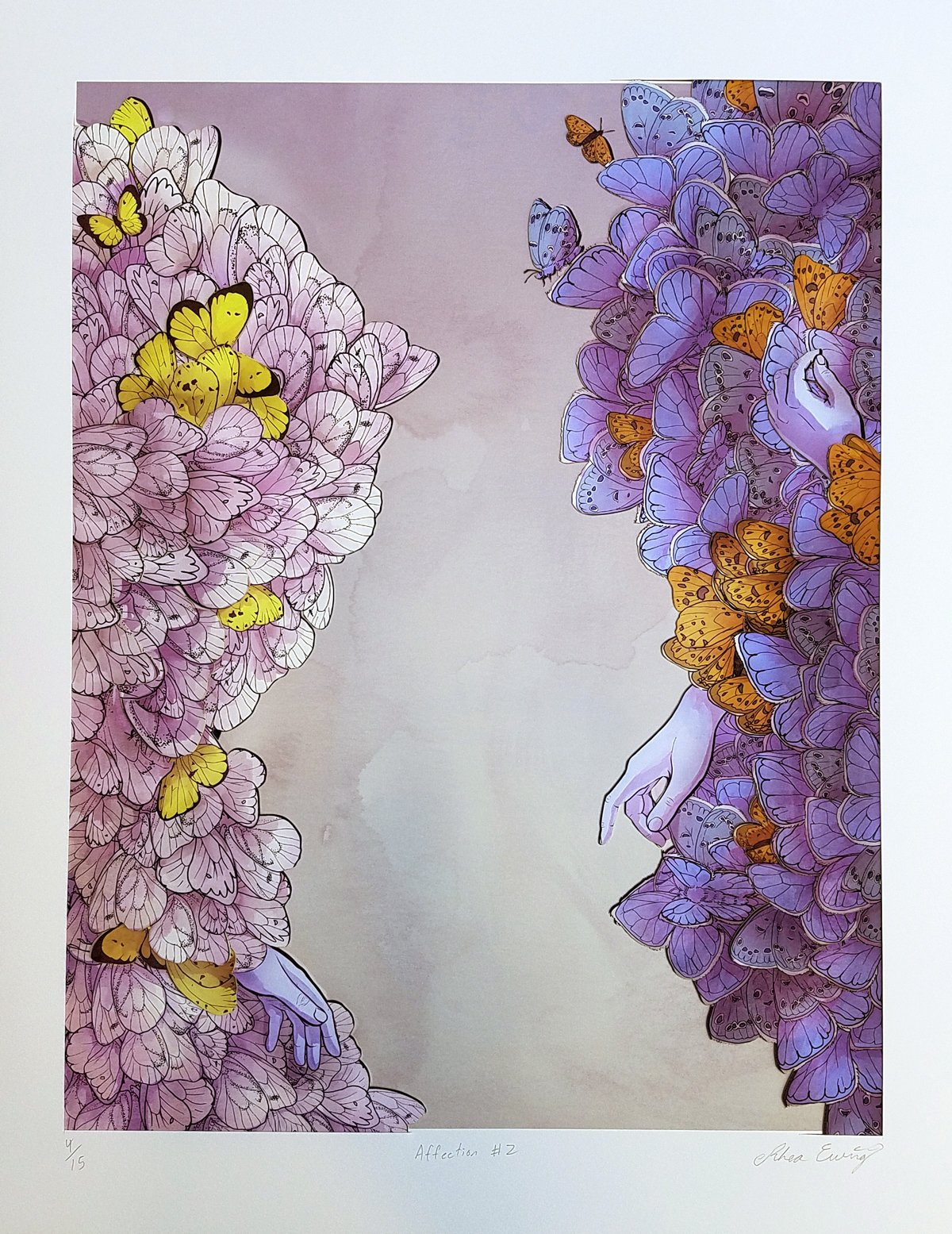
Affection
An interlocking print series. Two lasercut glicée prints interlock and support one another in each of this trio of images.










We often associate butterflies with romance, but the complicated relationships butterflies have with each other may surprise you. During mating, Green-Veined White Butterfly (Pieris napi) males give a packet of nutrients to the female along with their sperm. This gift is called a spermataphore. This spermataphore takes a lot of energy to make, averaging about 15% of the male’s body mass for their first mating. The gift of nutrients helps the female nourish her eggs. For females, this means that mating with the highest number of virgin males possible may be the best strategy, and they do prefer to be polyandrous. She may also choose to mate with one virgin male, then use the nutrients from that initial mating to nourish eggs from subsequent partners. Males will try to limit subsequent pairings by spending a longer time with each female, releasing anti-aphrodisiac pheromones when they mate, or releasing extra infertile sperm in order to take up space that the females could use to mate with other males.
Humans have much more complicated relationships than butterflies, based on exchanges of social and emotional support, resources, knowledge, and security. There are a lot of societal models we can use to define our relationships based on distance, closeness, and respect. Monogamous, polyamorous, entwined, distant, passionate, and companionate love are all possible. Is one valued more than the other? Which, if any, do you choose?
lasercut glicée
18X24" 2016 limited editions available